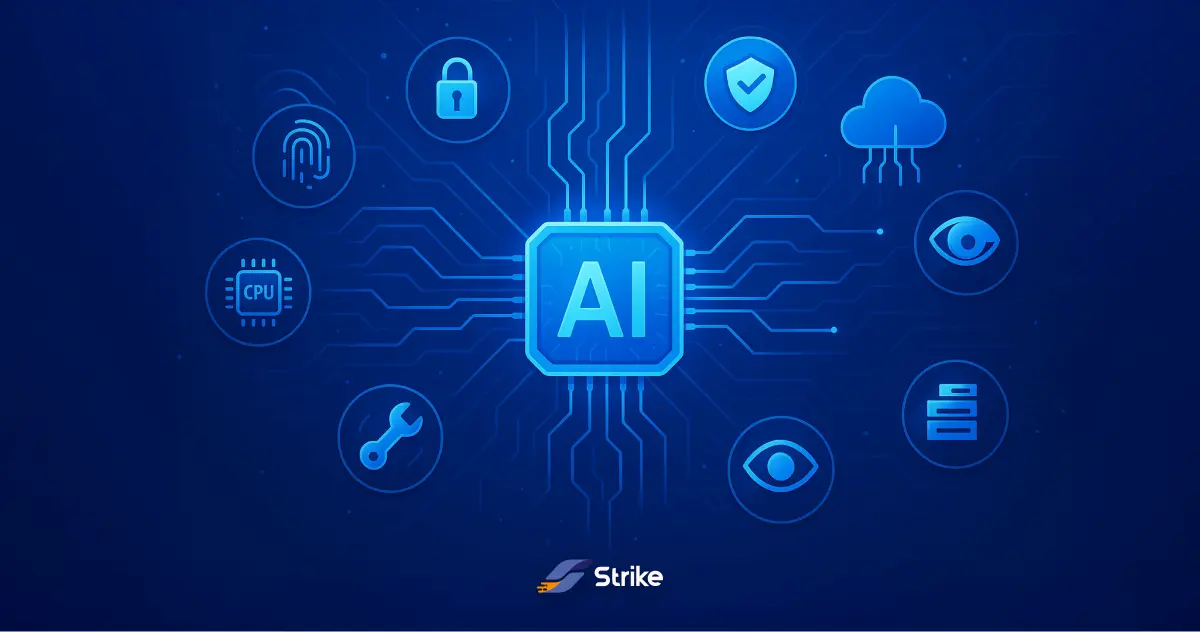
Security often comes too late in AI projects, after the model is trained, deployed, and already in production. But by then, it’s usually just a patchwork of compensations for structural flaws that should’ve been addressed earlier. Treating AI security as a feature from the very beginning is the only reliable way to prevent the most common (and most expensive) threats: model theft, prompt injection, and data leakage.
AI systems are highly sensitive to input manipulation and rely on large datasets, often proprietary or confidential. This makes them attractive targets and easy to exploit if not secured properly. If your team is building or integrating AI models, it’s time to apply AI security best practices like any other mission-critical component of your infrastructure.
Keep reading to discover the key principles behind secure AI development and how to make them part of your build process from day one.
Build a secure foundation with threat modeling
You can’t secure what you don’t understand. That’s why AI projects should start with a tailored threat model—just like web applications or networks do.
Key questions to answer in your AI threat model:
- What are the entry points for untrusted input (e.g., user prompts, API calls)?
- Which components handle sensitive logic or data?
- Can your model be queried or extracted by third parties?
- Are there downstream effects or chained systems impacted by model decisions?
Common risks to include:
- Prompt injection attacks
- Model extraction and fine-tuning leakage
- Inference manipulation
- Misuse of LLM outputs for social engineering or bypasses
A solid threat model informs every other security decision and reduces costly surprises later in production.
Secure your data pipeline and training process
Training data is the backbone of any model—but it’s also one of the most overlooked sources of risk.
Here’s how to minimize exposure:
- Apply access controls: Treat datasets like source code. Only those who need access should have it.
- Sanitize inputs at scale: Don’t trust external data without validation. Scrub inputs for poisoned samples or malicious payloads.
- Use differential privacy techniques: These reduce the risk of sensitive information being memorized and leaked through model outputs.
- Keep version control and audit logs: Every training run should be documented and reproducible for incident response or forensic review.
Harden model interfaces against abuse
Once an AI model is deployed, it becomes a live target. Especially LLMs exposed through chatbots or APIs.
Defensive steps include:
- Prompt injection filters: Implement regex and contextual logic to detect and reject attempts to override system instructions.
- Rate limiting and auth: Control how often and by whom the model can be queried.
- Output monitoring: Use classifiers to detect toxic, offensive, or sensitive outputs before they reach end users.
- Limit capabilities with guardrails: Prevent your LLM from browsing the web, executing commands, or generating code unless strictly necessary.
At Strike, we’ve seen ethical hackers exploit unsecured LLM endpoints to extract training data, impersonate admins, or generate misinformation. These aren’t theoretical—they happen when guardrails are missing.
Automate security testing throughout the AI lifecycle
Security checks must be continuous, especially in AI systems that retrain or adapt dynamically. Make security testing part of your CI/CD pipeline.
What to automate:
- Model behavior testing: Feed adversarial prompts to probe for unexpected outputs or policy violations.
- Output fuzzing: Test responses for edge cases or logic flaws using generative techniques.
- Permission testing: Confirm that API access, feature toggles, and system-level capabilities are appropriately segmented.
Drift detection: Monitor for unexpected changes in model behavior over time, which could indicate shadow retraining or compromise.
Strike’s Automated Retesting is already helping companies apply this approach in their traditional software pipelines—and we’re now extending this thinking into AI.
Make secure AI development a shared responsibility
Security can’t just be the responsibility of a red team at the end of the release cycle. Instead, developers, ML engineers, and security professionals must collaborate early and often.
Recommendations:
- Include AI-specific security training in onboarding for dev and ML teams
- Run threat modeling workshops when starting new AI projects
- Encourage joint reviews between security and ML experts before deployment
- Invest in internal tooling for testing, monitoring, and response
And just like with any system exposed to real-world inputs, pentesting remains essential. AI security best practices can reduce your risk—but real attackers don’t follow rules. Bring in ethical hackers who can simulate actual threats.
The more intelligent your systems become, the more creative attackers will get. Whether you're deploying a simple chatbot or a multi-agent AI system, make secure AI development part of your strategy from day one. Because adding security later isn’t just expensive, it's often too late.









